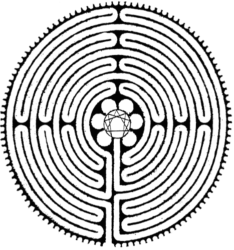The Way of the Sly One: Gurdjieff, Ouspensky, & Jung
This episode is the first part of the series The Way of the Sly One: The Psychology of Our Possible Evolution in the Writings of Gurdjieff, Ouspensky, & Jung.
Most depth psychological theories look backward into the personal history of the individual in order to find the causes for neurotic symptoms, gain insight into their persistence in the present, and diminish their effects in the future. A key feature of Jungian psychology is the addition of a forward focus, a constructive, teleological emphasis on the meaning of symptoms, and the need to discover what the symptom is calling the sufferer to notice and change. This places Jung in a category of psychological practitioners who seek to promote the possible evolution of the person from present status to future transcendence.
Russian spiritual teacher G.I. Gurdjieff sought to bring his students to a place of consciousness that went far beyond what was generally thought of as “being awake”. The core of his teaching, that humankind was unfinished and did not possess a soul but was capable of creating one through intense inner work, created discomfort in his followers and stimulated them to find ways to break through to new levels of awareness – a method he called “the way of the sly one”. P.D. Ouspensky, Gurdjieff’s foremost disciple, also taught about the possible evolution of human consciousness and provided a more systematized interpretation of Gurdjieff’s teachings.

Podcast: Play in new window | Download (61.2MB)
For the complete series, click here
For all seminars by Ken James, click here
© 1997 Ken James. This podcast is licensed under a Creative Commons Attribution-NonCommercial-NoDerivatives 4.0 International License. You may share it, but please do not change it, sell it, or transcribe it.
Music by Michael Chapman
Edited and produced by Benjamin Law




One Response
John Gilbert
Mar 10, 2021, 7:15 PM
to Elaine, me, Allan
Create A dissociative identity disorder in yourself,
?? your dog who may already be automata.
If you proceed you are likely to fail because,
it requires you learn of AUTOMATIC WRITING.
You’ll need to learn to use these 4 difficult tools:
psychogalvanometer – Concentative Meditation –
Learn to perform hypnosis – learn to perform “lucid dreaming”
In other words:
learn about the small dissociative identity disorders that exist in us all.
NOTES
The famous Swedenborg trained himself to perform ‘Automatic writing’ at the urging of a friend.
Bookmarked searches:
( “Swedenborg” trained himself to perform ‘Automatic writing’ at the urging of cohort OR HELPER – Google Search )
Parts of one’s brain, or the functioning part of one’s thinking which is normally isolated.
I’ve never met anyone who has tried automatic writing. It seems to be the result of training one’s brain to state not unlike self hypnosis. A formed entity: the ears (cognition) become a few brain cells of an isolated life entity, or two, perhaps more. From cognition to movement like a single cell amoeba – Cognition to movement = cognition is movement. Go slow, the primative immune systems of mammals create. Keep within PSYCHOLOGY or ABNORMAL PSYCHOLOGY. Don’t mix cytokine storms. to creat a partially formed ‘master seargent’, to become an entity not unlike the movie Three Faces of Eve – a true story – where she had her multiple personalities reintegrated back into one normal personality with the help of her psychiatrists.
https://en.wikipedia.org/wiki/Chris_Costner_Sizemore
Sizemore was born Christine Costner on April 4, 1927, to parents Acie and Zueline Hastings Costner in Edgefield, South Carolina.[1]
In accordance with then-current modes of thought on the disorder, Thigpen reported that Sizemore had developed multiple personalities as a result of her witnessing two deaths and a horrifying accident within three months as a small child. However, in Sizemore’s own report, these traumatic incidents only triggered the evidencing of selves which were already present:
Despite authorities’ claims to the contrary, my former alters were not fragments of my birth personality. They were entities, whole in their own rights, who coexisted with my birth personality before I was born. They were not me, but they remain intrinsically related to what it means to be me.[2]